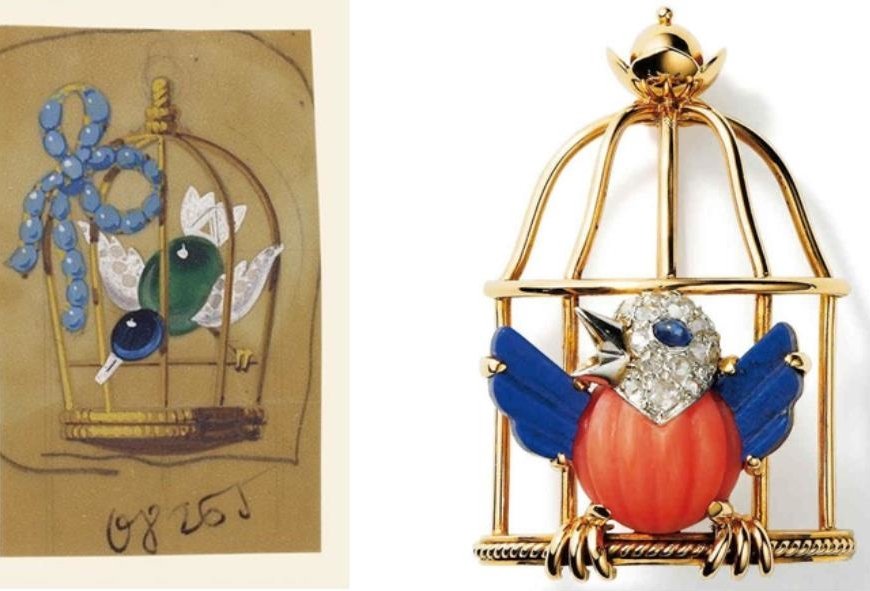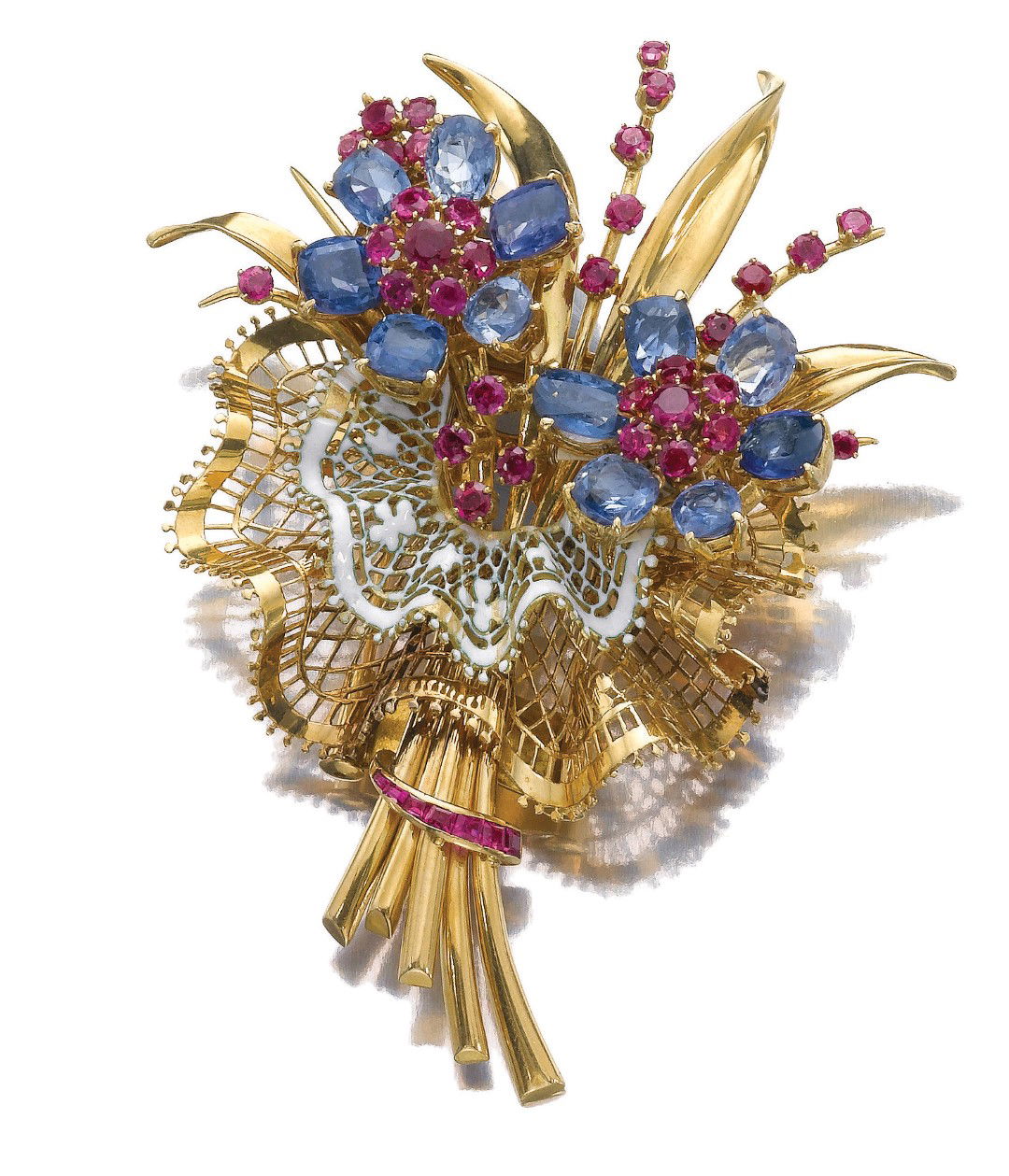On 25th August 1944 the German garrison surrendered Paris to the Allied Command and the following day saw a victory parade through the streets to celebrate the defeat of the occupation. In the same year, to commemorate France’s liberation, Jean Toussaint, Cartier’s Creative Director, created her iconic brooch designed as a bird in an open cage, poised for flight, representing Liberty, Fraternity and Freedom.
This symbolic jewel was created after Toussaint had produced a similar piece in 1942, at the height of the occupation, where a caged bird represented the imprisoned and suppressed French nation, steadfastly resisting their German aggressors. The red, white and blue of the released bird fittingly represented the national colours of France, Great Britain and the United States. By popular demand, a new era in jewellery design was ushered in, characterised by a bright palette and a sense of playfulness – in reaction to the long, grinding years of the War, austerity and rationing.










